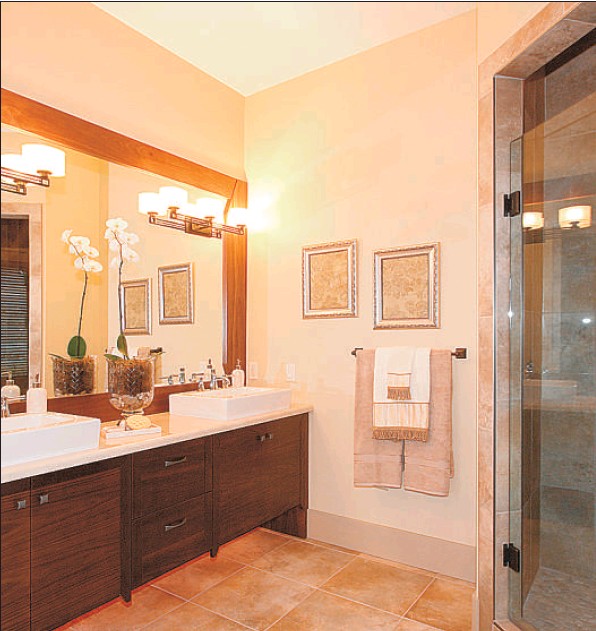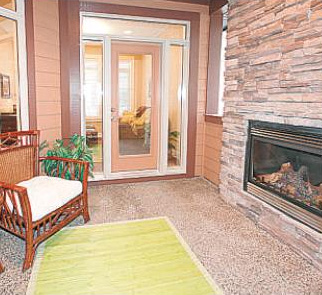Predicted increases not ‘heady’, but not bad either
Peter Simpson
Sun
For years, industry-watchers have waited for the buoyant Vancouver-area real estate market to trip over a curb. Since 2001, there has been nothing but good news. As a former editor, I can tell you that good news piled onto good news is a boring storyline for the media to follow month after month.
Recently, real estate skinned a knee, and everyone scrambled over each other to dial 911. But did the market really take a nasty tumble?
The reality reflects a Mark Twain quote: “The report of my death is greatly exaggerated.”
Yes, the resale market is having its challenges, as listings significantly outpace sales, transferring the upper hand from sellers to buyers and taking the panic out of the purchase.
But Cameron Muir, the respected chief economist for the B.C. Real Estate Association, said: “There is no evidence of any kind of substantial decline in prices.”
Also, I believe some of the homes lingering on the market were listed above true value, due to lofty expectations by homeowners and inexperienced agents. Homes that are priced right are selling.
Canada Mortgage and Housing Corporation predicts prices in Metro Vancouver will increase eight per cent this year and five per cent in 2009. Not heady numbers, but not bad either. Our situation here is a far cry from the misery experienced in many U.S. housing markets.
CMHC reported that for the January-through-June period, housing starts in Metro Vancouver were up nine per cent over the same period last year. Single-detached starts dropped, but multi-family starts (townhomes and condos) continued to climb, primarily due to affordability factors. More than 99 per cent of all new detached homes in Metro are priced above $350,000.
If this upward trend continues for the next six months, and starts end up higher than last year’s 20,736, this year will be the best year since 1993 – a 15-year high.
Even if starts slip a thousand or so below last year’s total, the homebuilding industry will still have achieved an average of more than 19,000 starts annually over the past five years. To put that average into perspective, a dismal 8,200 starts were recorded in 2000.
Last year, Metro Vancouver’s housing starts created 58,000 direct and indirect jobs, generating $3.1 billion in wages and $1.6 billion in government revenue from taxes. That’s a lot of positive zeroes.
Since today’s sales will determine tomorrow’s starts, I wanted to find out how the Metro Vancouver new-homes market was faring on the sales side, so I e-mailed builders and marketing agencies, asking them to share with me their recent experiences at presentation centres throughout the region.
Marketing veteran Howard Steiss responded, telling me forward-thinking people don’t buy used iPods, PCs or BlackBerrys, so it makes sense that they gravitate to leading-edge technology, eco-friendly products and sustainable building methods available in today’s new homes.
Business iconoclast Tom Peters – often referred to as the father of the post-modern corporation – appears to be on the same page as Steiss, believing “cool stuff is cooler than stuff that’s not cool.”
Fifth Avenue Real Estate Marketing president Mark Belling, like Steiss, a veteran marketer, told me his company, in mid-June, sold 150 condominiums during one weekend at Surrey‘s East Clayton neighbourhood. “Many people say the economy is not strong enough to absorb that many condominiums, that the old times of fast absorptions in mere hours was over. Not so,” he said.
Portrait Homes principal Rob Grimm, whose Maple Ridge single-family development was judged best in Canada, said that despite six weekends of snow in January and February, which affected visits to his sales office, Portrait entered into 29 sales contracts so far this year, compared to only 16 for the same period in 2007. “Not only that, but savvy purchasers are choosing an unprecedented amount of upgrades, so they can personalize their new homes to suit their tastes and lifestyles,” said Grimm.
Jay Minhas, president of Elegant Development, said sales are brisk at his 54-unit townhome project in East Richmond. “Despite being in the pre-launch stage, more than 25 per cent of the units have sold and we are experiencing strong interest and a significant volume of registrations,” said Minhas.
phase of an attractive – and attractively priced – project in desirable South Surrey recently. In one week, 26 of the 35 available townhomes sold. “Location, value and brand-name recognition are important considerations to home buyers these days, so the opening-day crowds and strong sales result at Kaleden did not take us by surprise,” said Polygon president Neil Chrystal.
Polygon also sold 27 lowrise condos at its Branches project in North Vancouver in under two weeks.
In my view, the big story is Morningstar Homes, which opened its Terella project in North Delta two weeks ago. This project took a painfully long time clearing the approvals process as residents, apprehensive about a new subdivision in their community, expressed their concerns emphatically.
That challenging history is what makes this success story all the more remarkable. More than 2,000 people pre-registered for an opportunity to purchase one of the four-bedroom, two-storey, 2,400-square-foot single-family homes. The first phase of the 178-home project was the release of 26 homes.
Morningstar president Dale Barron was adamant that his company did everything it could to allay the fears of neighbouring homeowners, who sought assurances the new homes would fit in to their established community of predominantly 30-year-old ranchers and basement-entry homes.
“North Delta homeowners were invited to participate in focus groups where they could review the designs and express concerns. Not only were the homes designed to reflect those concerns, they were built to the BuiltGreen Gold standard – a high level of resource- and energy-efficiency,” said Barron.
All trades had to adhere to a good-neighbour policy, which included rules for times of work, parking vehicles in designated locations, keeping noise levels down, and respecting neighbouring property.
Barron wanted the immediate neighbours to be the first to see the showhomes before they were open to the public, so staff hand-delivered 75 invitations to an evening event. More than 150 showed up.
Here’s the thing – the majority of the 20 homes sold in the initial offering of 26 were purchased by North Delta residents, including some of those neighbouring homeowners who initially were concerned about the project. You can’t get a much better testimonial than that.
To get the banker’s view on the current market and determine how pre-construction condo projects were faring, I spoke with Barry Fenton, senior vice-president of the Citizens Bank.
Fenton said his bank has a $1-billion construction portfolio of 50 projects across Canada, and all are performing well. He said he is working with builders to facilitate successful completions of projects.
“Although there were some unforeseen construction delays, all the presales are closing and all construction loans are being repaid by builders as agreed or even before they are due. One Vancouver builder client actually completed his project ahead of schedule and under budget,” said Fenton.
Even municipal building officials are weighing in with positive statistics. John McKenzie, manager of the residential section for the City of Surrey said his department is experiencing an increase in permit applications for single-family homes, a sector that has been somewhat sluggish recently.
“Our January-to-June figures show we have received about 30 per cent more building applications for single-family dwellings this year than over the same period last year. The mid-year total for 2008 was 819 permit applications, compared to 615 for the first six months in 2007,” said McKenzie.
The last word on this subject belongs to Tom Peters, mentioned earlier in this column: “Real estate over stocks every time.”
I will be taking a little vacation from my Westcoast Homes column. Have a wonderful summer.
Peter Simpson is the chief executive officer of the Greater Vancouver Home Builders’ Association. E-mail: [email protected]
© The Vancouver Sun 2008
























